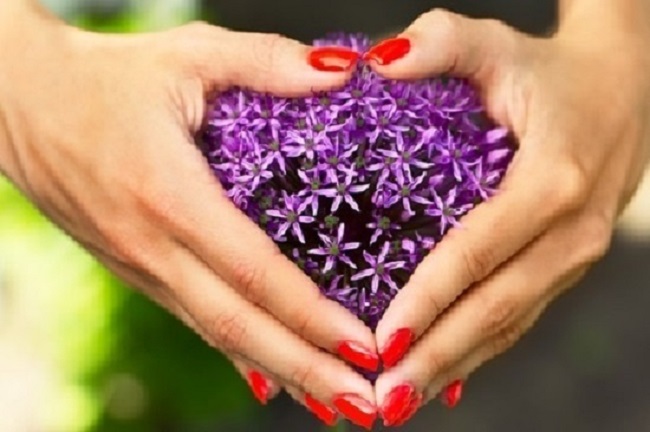My family does not talk about sex. In fact, I can only pray that my mother doesn’t happen to get on Facebook, see a status with a link to this article and read this; I blush at the mere thought. I like sex (now I’m really blushing), but in respect to how a lady should act when discussing, or rather not discussing it, I’d say that Bree Van de Kamp from Desperate Housewives is the best way to describe how I was taught to act. You can only imagine my surprise when I recently discovered that there are entire careers and movement dedicated to sex, outside of sex workers, for OUR pleasures.
Intimacy Coaches
Recently, I read an article on how yoga helps intimacy (a lady is not supposed to talk about it, that does not mean she can’t read about it!). I already find yoga challenging, so trying to incorporate some of the poses into sex just left me in awe of the writer. As I read through her bio, she mentioned that she was an “intimacy coach.” I’ve met wellness coaches, career coaches, life coaches, and more, but I have never met an intimacy coach. When I read the bio, I was instantly intrigued by this ‘unprofessional’ (as Bree would see it) profession.
Intimacy coaching, and intimacy, is more encompassing than just sex, but I find it ironic that we live in a society that is constantly bombarded with erotic imagery and yet require intimacy coaches. Turn on the television or open a magazine and there are flashy images of Victoria’s Secret models who are nearly nude. Family television shows have evolved from Leave it to Beaver to pregnant teenagers, scandalous affairs and intimateless relationships, and the commercial breaks air Viagra and other sexual dysfunction ads (try explaining this one to an inquisitive child!). We are a culture that appears to be obsessed with sex, but, judging by commercials, one that doesn’t sexually function properly at all. Intimacy coaching is probably a lucrative business or at least should be.
I looked up “intimacy coach” and a variety of sites popped up. Some practitioners have an MA (I’m assuming in psychology?) others were just listed as “coaches.” I’m assuming someone decided to jump on the “coaching” bandwagon and open a school to certify people as intimacy coaches, but I couldn’t find too much information that wasn’t an ad or blog for an a actual coach. Have you ever sought treatment with or know an intimacy or sex coach?
Slow Sex Movement
While researching intimacy coaching I came across the Slow Sex Movement. Nicole Daedone, the founder of One Taste and the origins of the Slow Sex Movement, describes her company as “a business dedicated to researching and teaching the practices of Orgasmic Meditation and Slow Sex. Though it embraces certain tenets based in eastern philosophy, One Taste’s central focus is female orgasm and sexuality.” An entire sexual movement dedicated to the female orgasm from a cultural perspective not medical – it’s about damn time!
The slow sex movement practices “OMing” or orgasmic meditation. Similar to regular meditation, it is a mindfulness exercise in which the object of meditation is finger to genital contact on the woman with the focus of both partners developing connective resonance between them. There are group classes, private lessons, coaching opportunities and more (including retreats where participants live in the facility and practice daily OMing). I find it interesting that the focus of this movement is on the woman’s body and pleasure, but does not require love, romance or flirtation according to a NYTimes article. Is the belief that for women sex and orgasms are more emotionally driven than men, false?
Here is an introductory video to OMing, but it is graphic so watch it in private and without children present: One Taste Intro Video
Orgasm, Inc.
Why are women so embarrassed to talk about our sexuality? Why is it taboo to talk about our clitoris and the fact that it has more sensory nerves than any other part of our bodies including our hands and, sorry men, the penis? I’ll admit, I’m stepping way outside of my comfort zone to publicly write about this subject, but why is that? If we can’t talk about it, how are we to address problems like female sexual dysfunction. A problem that has created a multi-billion dollar solution in the form of pharmaceuticals.
Filmmaker Liz Canner, recently made a documentary examining the mainstream and less-mainstream practices that women are seeking out in order to deal with sexual dysfunction, called Orgasm, Inc. I watched this documentary when it popped up on my Netflix account. It’s a very interesting look at a very quiet, but very booming industry. One statistic that is repeated over and over when researching this topic is from the Journal of American Medical Association (JAMA) and states that “43% of women in the US suffer from sexual dysfunction.” As you can see in the preview, Oprah called it a “secret epidemic.”
The various salesmen, medical professions and others throughout the documentary talk about female orgasm as if it were as legendary as a leprachaun riding a unicorn through fields of gold plated daisies. Perhaps these women just need to practice OMing more?
Vagina Monologues
If you have never read or seen this play I am commanding that you do it today. Right now. It will make you laugh, cry and love being a woman even more. Eve Ensler wrote the monologues after interviewing over 200 women on their sex, relationships and violence against women. She asked questions like, “If your vagina could talk what would it say? SLOW DOWN.” She talked about first periods, smells, and everything that is not proper to talk about. After seeing a photograph and magazine article about girls who had survived a rape camp in former Yugoslavia, Eve went there and interviewed Bosnian women refugees in camps and centers.
Eve started a nonprofit, V-Day, a global movement of grassroots activists dedicated to generating broader attention and funds to stop violence against women and girls, including rape, battery, incest, female genital mutilation (FGM) and sex slavery. Theaters, schools, individuals all around the world perform the Vagina Monologues, raise money and awareness to break the silence of violence against women.
Conclusion
Why? Why is it so taboo to talk about women and sex, be it pleasure, violent, medical or just casual? I used to babysit for old neighbors – a boy and girl (ages 10 and 7 respectively). One time the little girl fell and as she stood up, she announced, “Ouch, I hurt my vagina.” I remember being uncomfortable (much like our current legislators), and then feeling uncomfortable with myself that it had made me uncomfortable. It always starts with our children and teaching them the proper anatomical words rather than making our sex organs taboo. Is the Western world’s inability to address female sexuality the reason so many women are considered “sexually dysfunctional” or is there a biological component? What do you think?
This article was published previously in Hormones Matter in June 2012.











